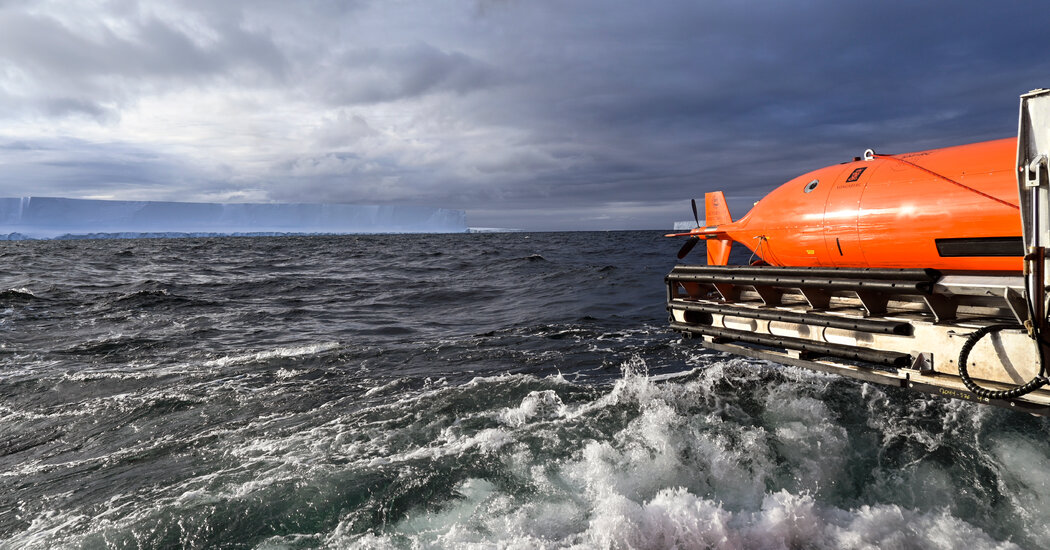The new images of the melting underside of an ice shelf could help scientists better forecast how the continent is contributing to rising sea levels.
By sending sound waves into the warming seas around Antarctica, an underwater robot has given scientists a detailed new look at the melting undersides of the continent’s giant ice shelves, which matter hugely for global sea levels.
The images taken by the robot contain clues about how the shelves are thinning. They reveal several never-before-seen formations in the ice, including immense terraces with rounded, swirling edges, and teardrop-shaped divots, some that are hundreds of feet across, that appear to have been sculpted by turbulent currents.
The scientists behind the discovery described the structures as “enigmatic.”
“I couldn’t stop looking at it,” said Anna Wahlin, an oceanographer at the University of Gothenburg in Sweden, describing the first time she saw the data. “We had no idea it could look like this.”
It’s not just the transfixing beauty of these features that interests scientists. Ice shelves are the floating edges of glaciers, and they are critical to sea level rise. The shelves block Antarctica’s glaciers from shedding more of their ice into the ocean. As more warm water bathes their undersides, the shelves melt and weaken, causing glacial ice to flow more swiftly out to sea.
The new imagery comes from underneath the Dotson Ice Shelf, which sits on the Amundsen Sea off West Antarctica. Dotson is more stable than other shelves in the region. Dr. Wahlin and her colleagues were originally hoping to survey the bottom of the nearby Thwaites Glacier, which is losing mass quickly. Scientists have estimated that Thwaites’s total collapse would increase global sea levels by about two feet over several centuries.
